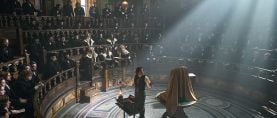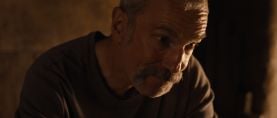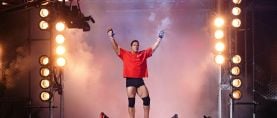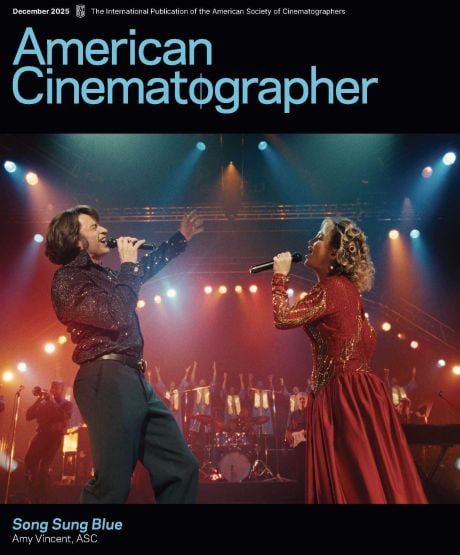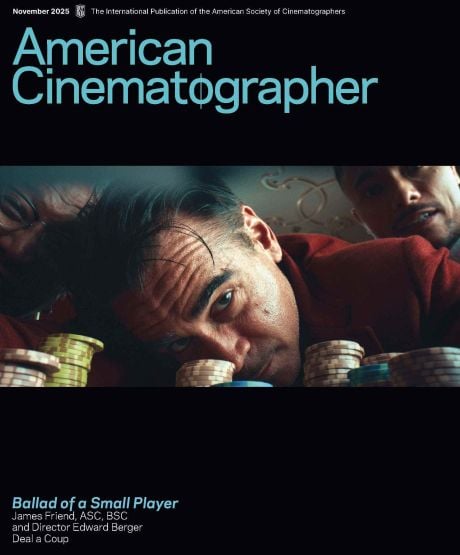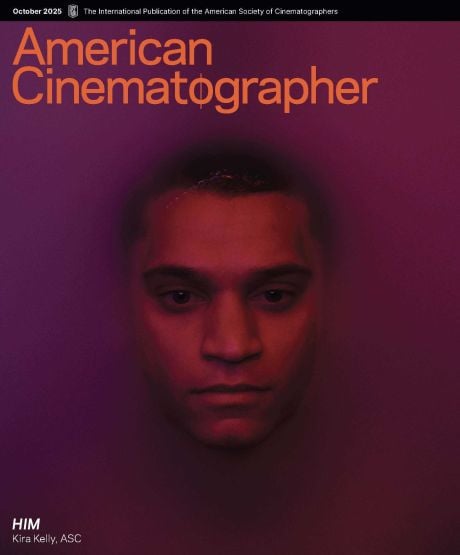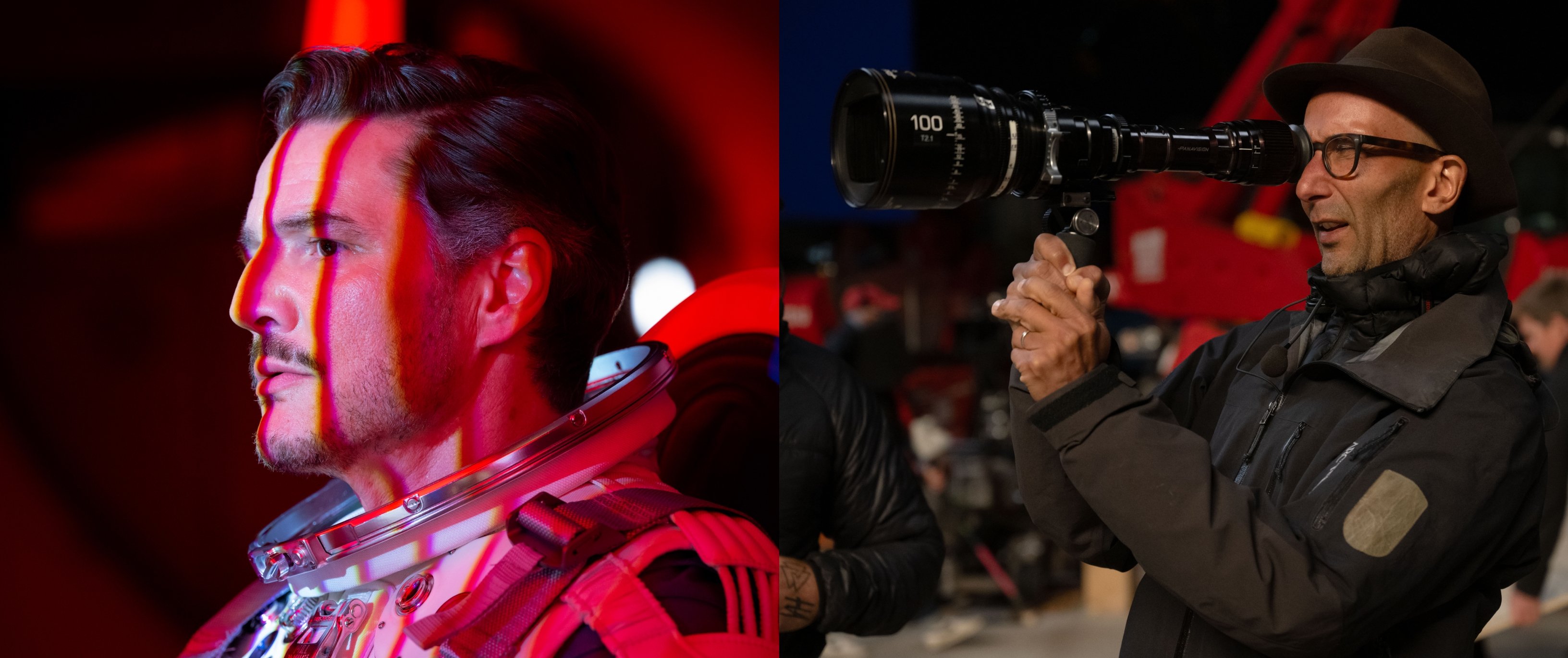
3 Lighting Diagrams From The Fantastic Four: First Steps
Cinematographer Jess Hall, ASC, BSC breaks down the setups that helped achieve his desired looks for some of the film's most pivotal sequences.
Scene 96 — Aboard the Excelsior
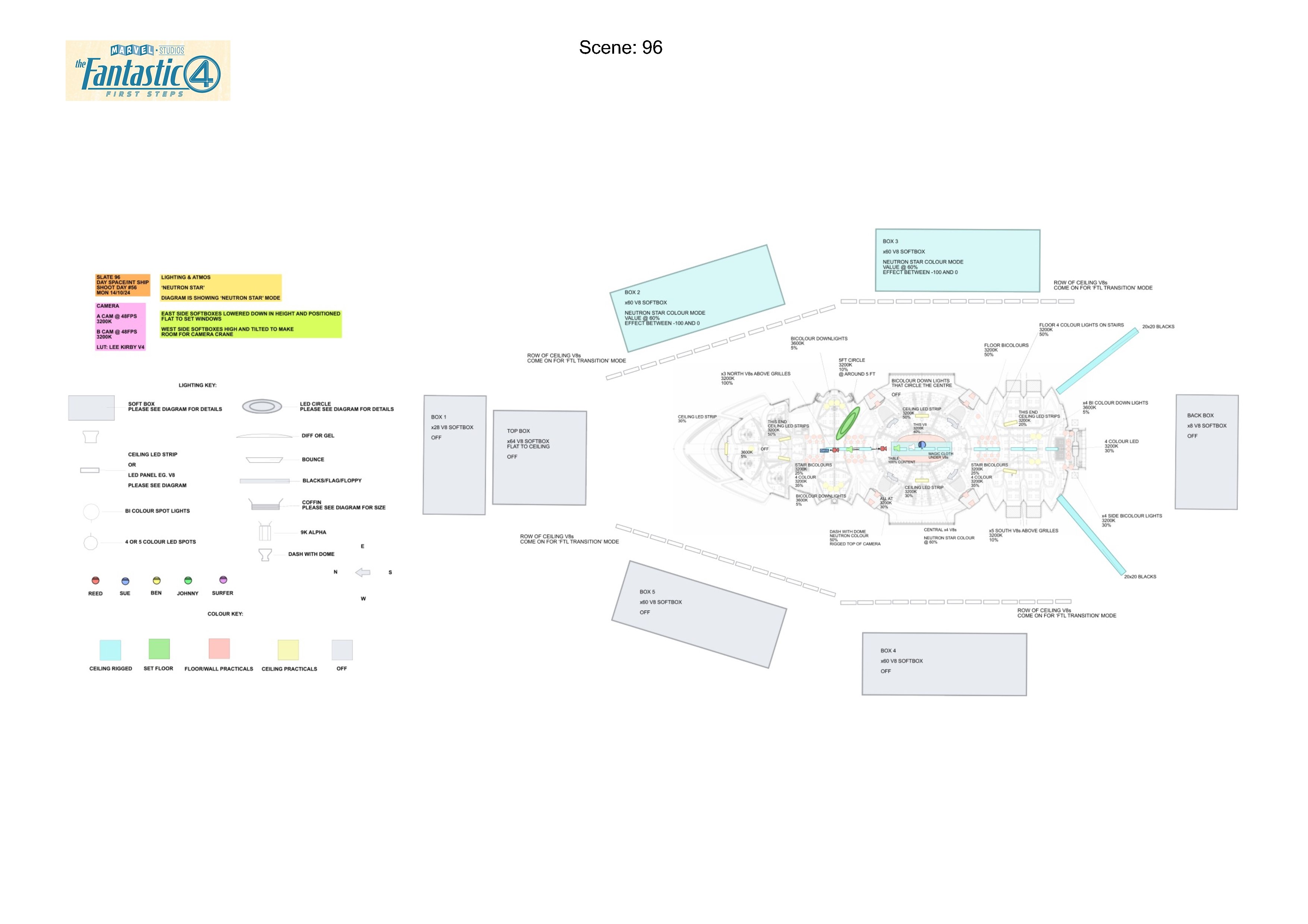
This sequence was one of the most complex featured in the film. The action finds our heroes navigating their spaceship, Excelsior; circumnavigating the accretion disk of a neutron star to evade the pursuit of the Silver Surfer (Julia Garner) in a high-velocity chase; and using deception to lure the Surfer into a black hole, while Sue Storm (Vanessa Kirby) gives birth to her baby, Franklin, in zero gravity.
To visually conceive the depiction and spatial dynamics of a neutron star, as well as the quality of light emitting from it, I consulted with theoretical physicist Clifford Johnson, Ph.D. at the University of California-Santa Barbara. I was trying to design a color palette across the various space environments that was scientifically logical, while also working to
support the narrative. I programmed complex lighting patterns and movement for each space environment, settling on a gold hue for the neutron star. This was inspired by, and reminiscent of, a color you might see in the work of Vittorio Storaro ASC, AIC.
As Excelsior leaves the neutron star and navigates the perimeter of the accretion disk, I was able to animate the lighting source around the gimbaled set to replicate the movement of the craft as its orbits the star, and modify the luminance to suggest the correct distance. A neutron star is incredibly bright, so naturally, it became the key light for the scene permeating the craft through its many windows and dominating the practical sources integrated into the set.
I wanted the cabin of the Excelsior — the set for which is pictured below — and our characters to be greatly impacted by the different lighting environments they were traveling through, and for these to become a key element in the storytelling. That required a lot of lumens, so I used Creamsource Vortex8 fixtures in large adjustable arrays. These could be elevated or slid out of shot to reveal gray or black backings, which enabled our visual-effects team to achieve clean keys around actors while maintaining maximum interactive light.
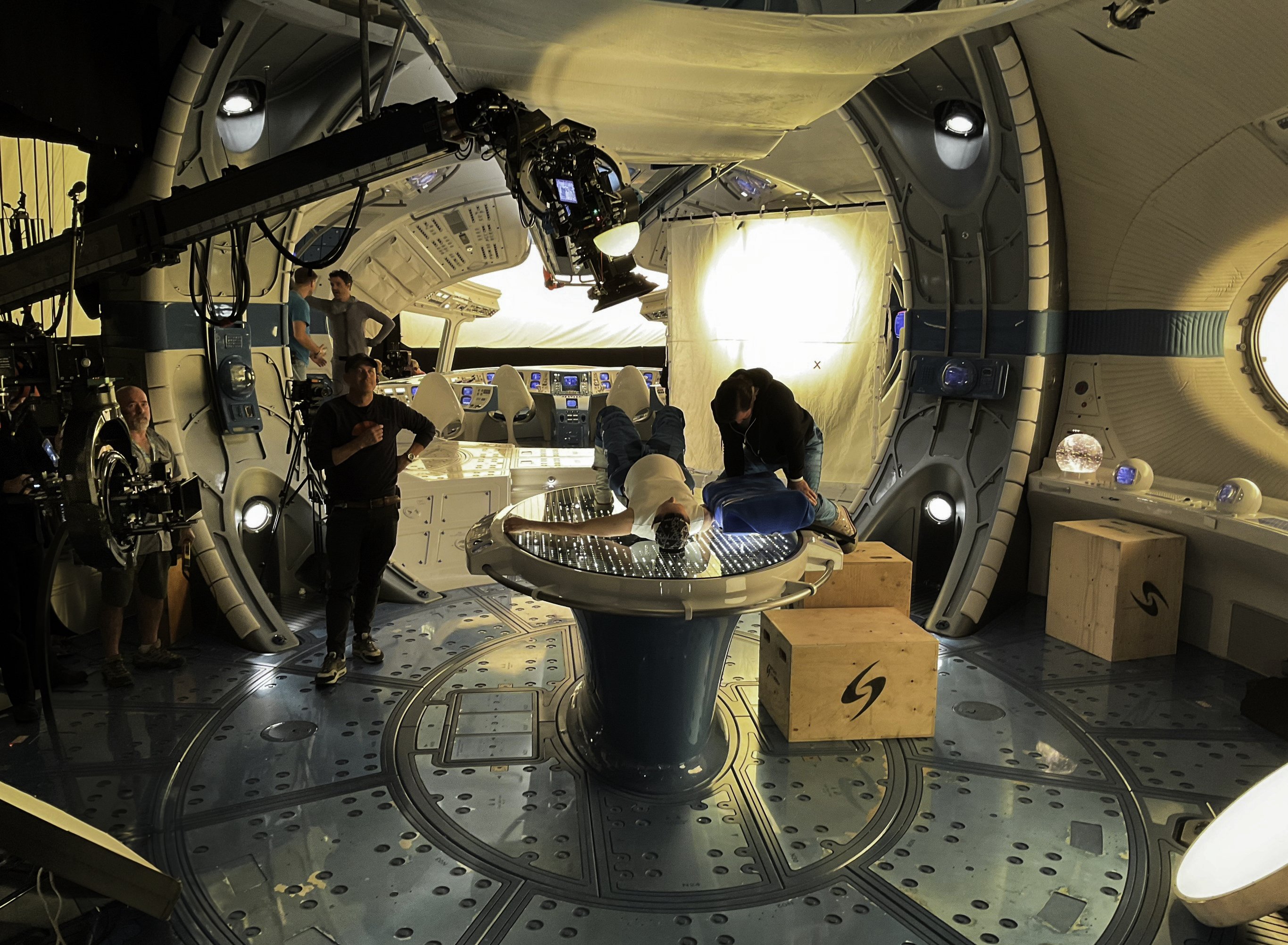
As the scene reaches a climax, Ben Grimm (Ebon Moss-Bachrach) pushes the craft into Faster Than Light (FTL) mode. A separate linear chase of cool-white Vortex8 units was initiated, creating a rapid overexposed moment of transition; Sue goes temporarily invisible; and the environment shifts dramatically to a much cooler palette and low-key illumination featuring low frequency, subtly modulating star fields rendered in secondary pastel hues. Ultimately, Franklin emerges as the Excelsior abruptly exits FTL and enters Earth's atmosphere. A pure-white Sun source of hard sharp light, previously eclipsed by the craft's trajectory, emerges from Earth; this was created using an Alpha 9K or a Nanlite, depending on the shot. The lens is briefly flared, and the warm bright light bathes the family in natural tones, thus restoring a sense harmony and balance.
Scene 54 — Silver Surfer Descends Upon Times Square
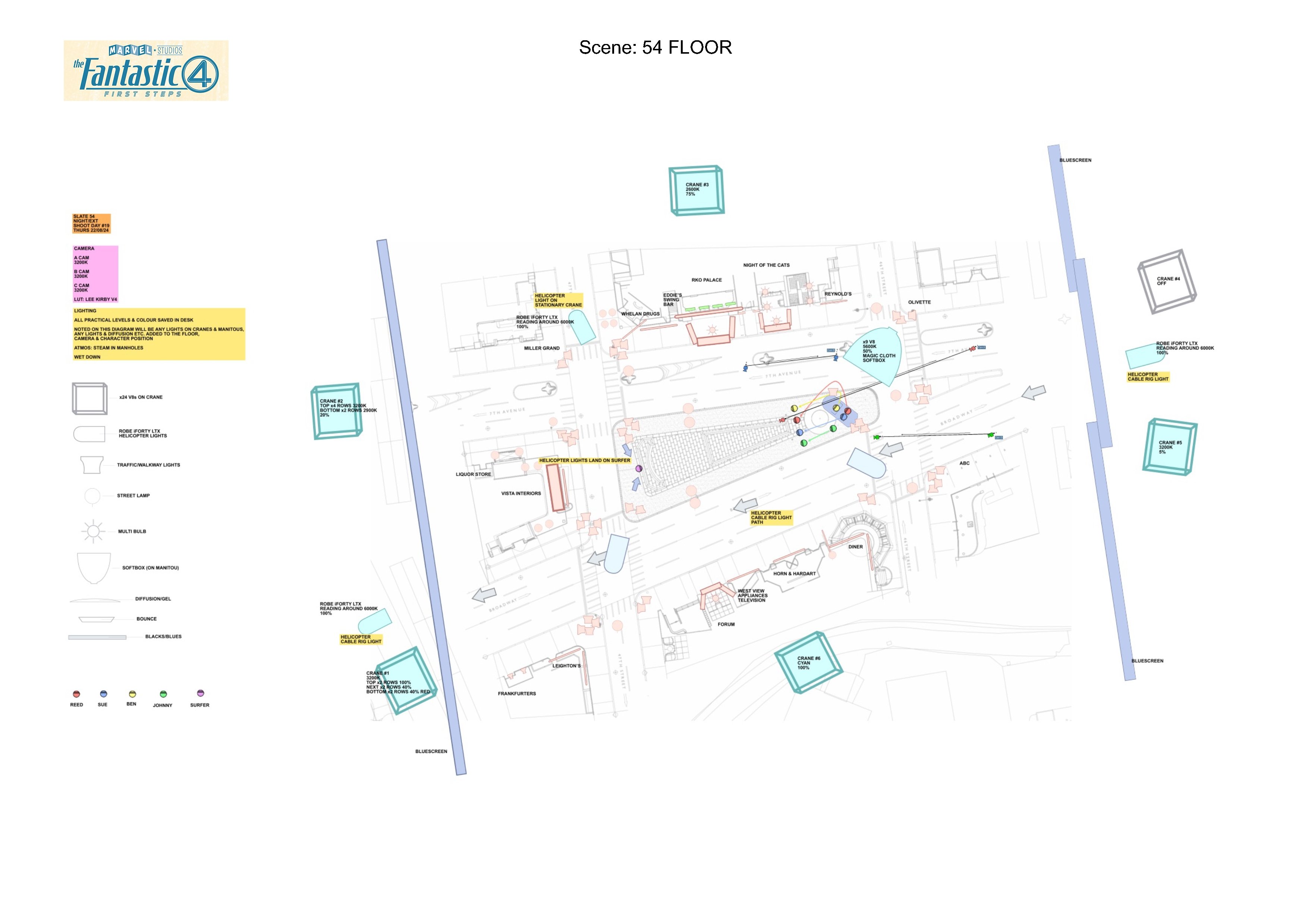
This scene introduces Galactus' (Ralph Ineson) herald, Silver Surfer, as she descends upon Times Square. The Fantastic Four arrive in the Fantasticar and the Surfer announces the coming of Galactus.
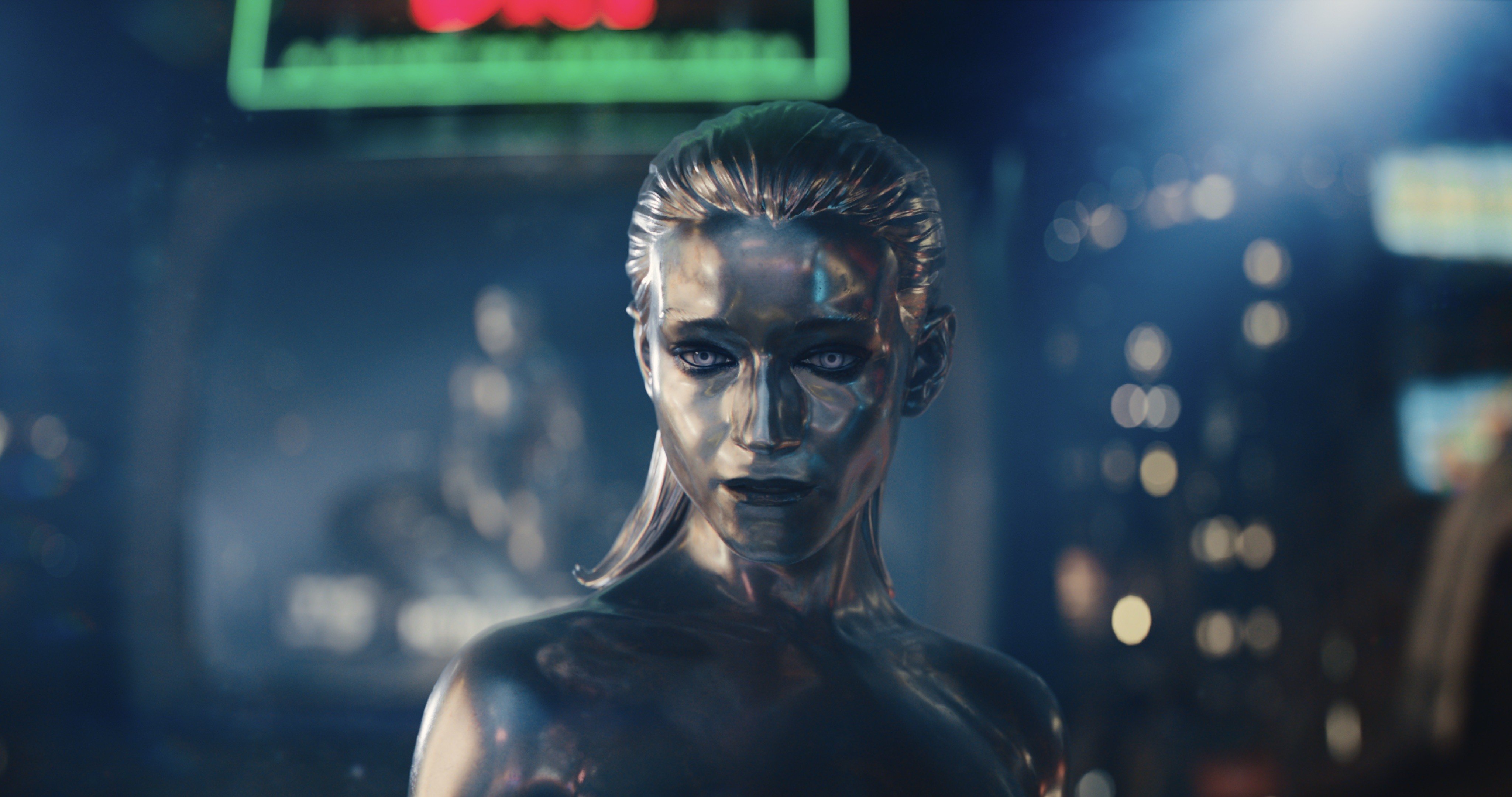
The Times Square set (pictured below) was immense — approximately only 20 percent smaller in footprint than the actual 1960s location. It featured six lanes of traffic, two theaters, more than a dozen storefronts with fully art-directed interiors, and required over 2,000 lighting fixtures.
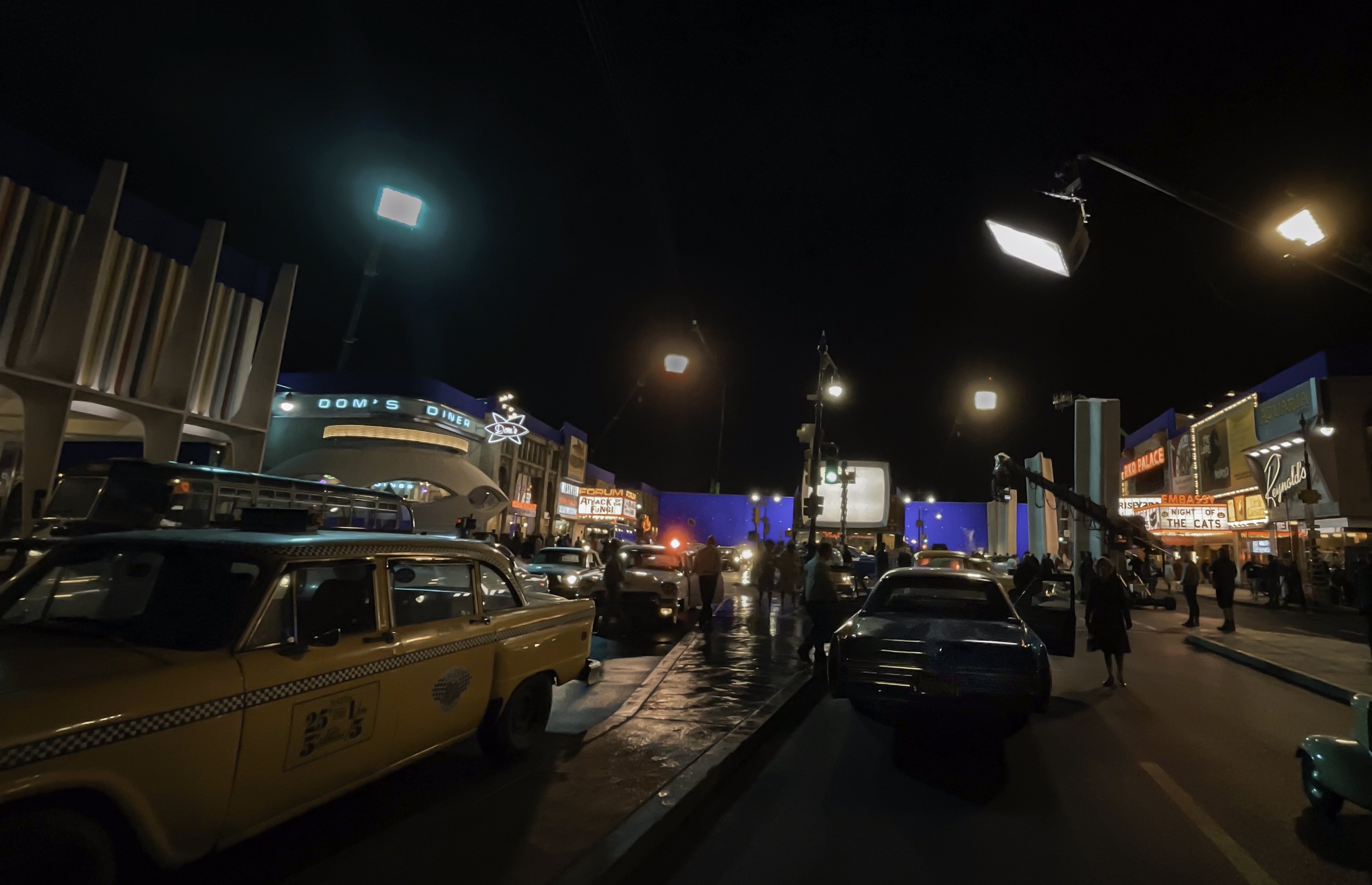
My concept was that the majority of the light would emanate from practical fixtures. Everything went via DMX and could be controlled on the iPad, which made the set surprisingly flexible and fast to work on. However, I still needed to supplement with film lights to give the scene the dramatic tension it required. In my mind, this could not simply be "available light," but something more classical and sculpted. After some testing and research, I settled on 24 and 36 light arrays of Vortex8s, rigged in close formations and mounted on 120-foot condors. This gave me an excellent, versatile and fully controllable RGBW night source. I could isolate specific fixtures within each source to reflect and mimic the colors in the dominant practical sources specific to each zone of the set, making the light feel very naturalistic yet with sufficient chiaroscuro.
As the chaos descends on Times Square, additional tension is created as a police helicopter sweeps in and illuminates the Silver Surfer using a searchlight. This moving light was replicated with a Robe LTX on a wire rig, which spanned almost the entire length of the set. I tested many fixtures, because this light needed to be 2.5 to 3 stops over key to create the hot, white, overexposed quality I desired to introduce the metallic patina of the Silver Surfer — a character of awe, elegance and menace. I also needed the light to be as high as possible to replicate the true path of the helicopter, and lightweight enough to travel at maximum speed on the wire rig. Matt Shakman and I designed a shot in previs on a 29mm UP2 that pulled back with the Fantasticar and hinged 180 degrees on Reed Richards (Pedro Pascal) as he exits the car to reveal the Surfer. This was a significant challenge, as it required me to look wide in both directions on this immense set in a single shot. Satisfactory lighting could only be achieved by using an in-camera lighting cue, which transitioned seamlessly with the camera movement.
Scene 83 — Galactus' Worldship
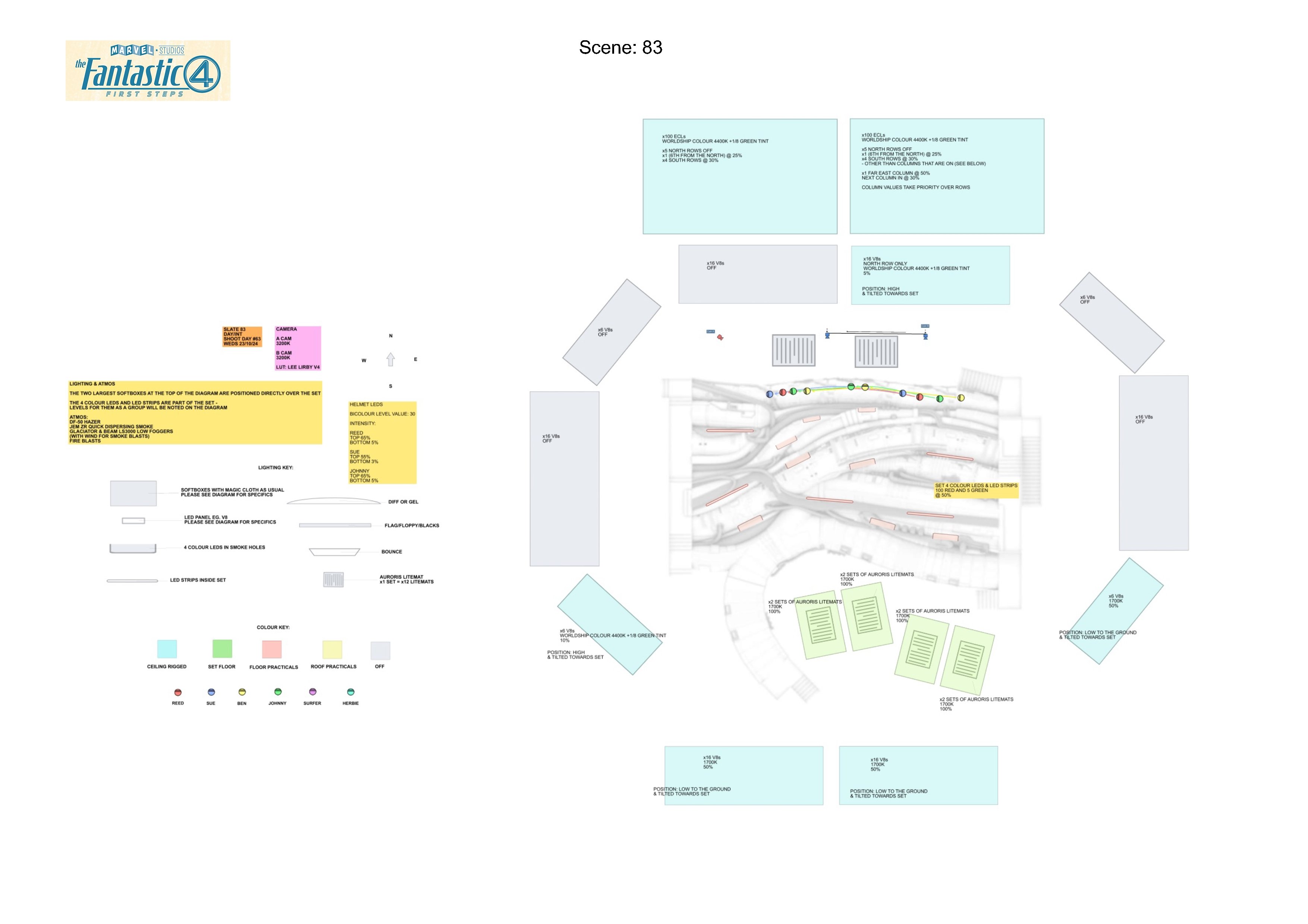
In this scene, the Fantastic Four enter Galactus' Worldship craft.
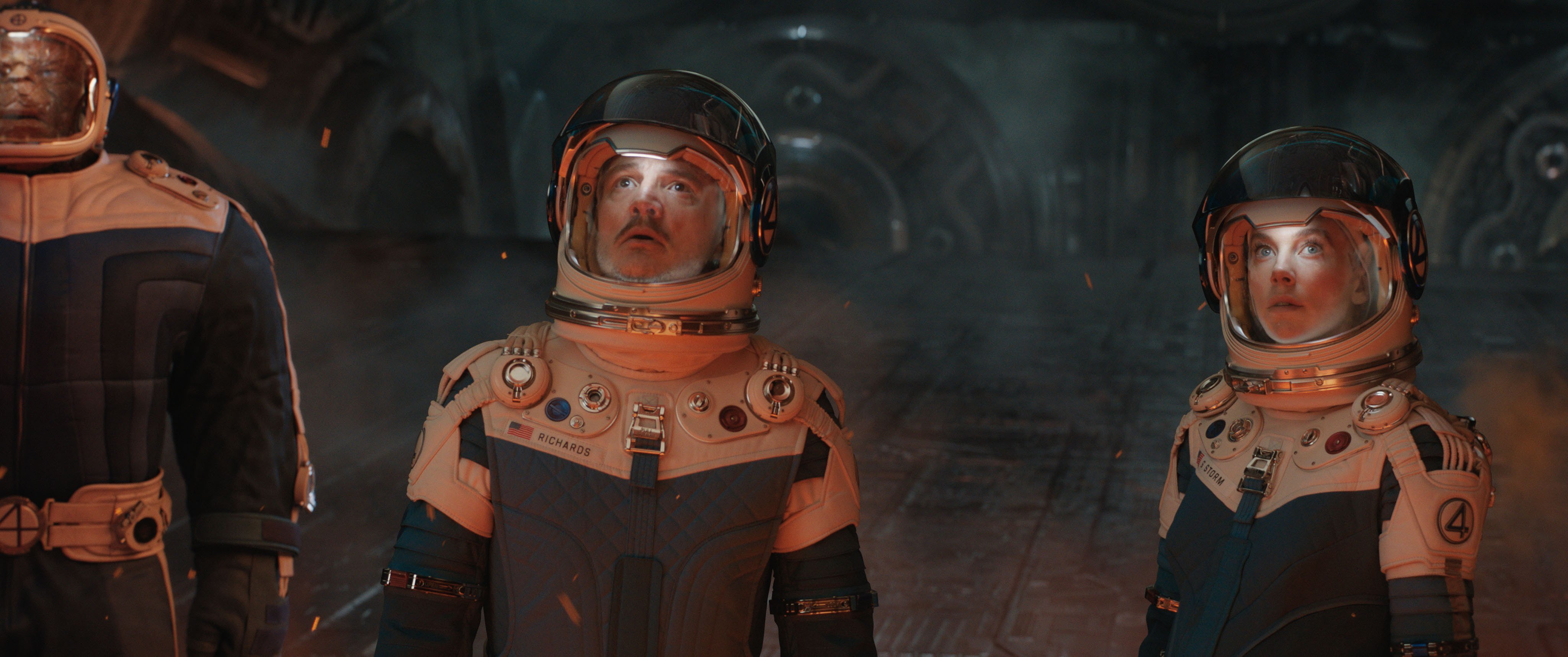
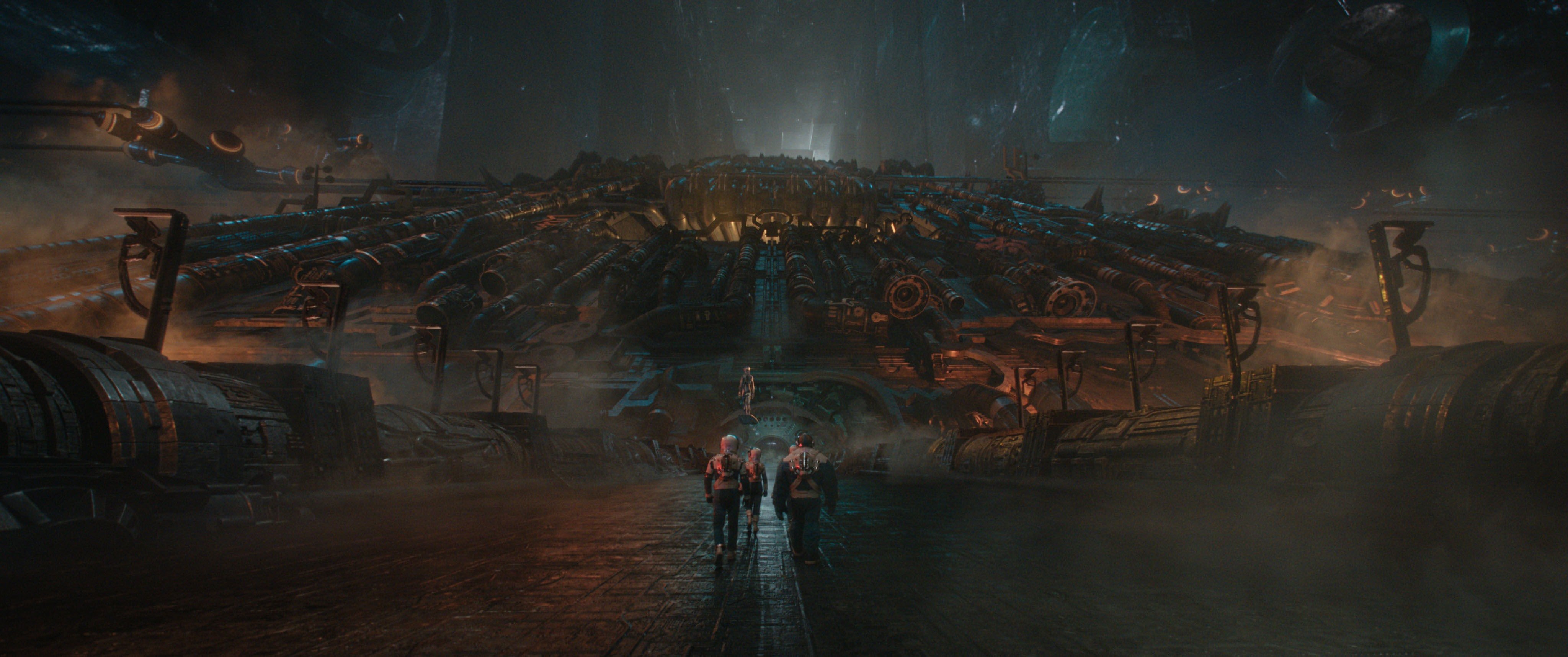
The concept of this environment is that it functions to extract the core from planets and process it to consume and convert into energy. The scale of this operation is hard to intellectualize, and to imbue it with a sense of realism, it was essential to scale the lighting to its maximum potential.
Dramatically, the scene necessitated a very dark environment, so I had to create a feeling of film darkness within an immense interior space. To
achieve this, I installed very large soft sources to function as a seamless fill light; these were set significantly under key. Interactive lighting sources driven by the processes required for extraction were the secondary source; these included real fire effects, simulated firelight and simulations of the various stages of flowing raw lava used in the refining process Galactus requires to make energy.
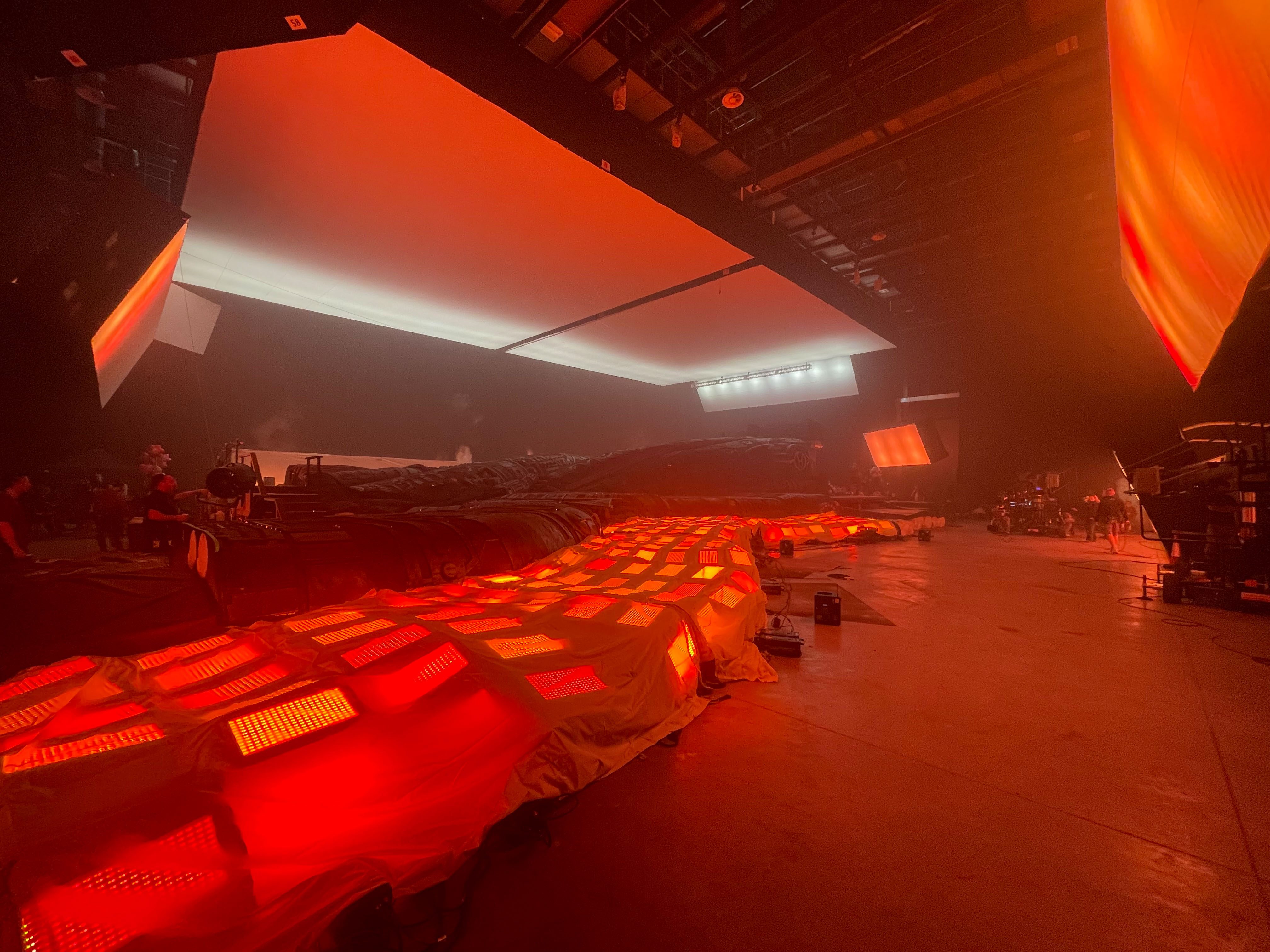
The arc of the journey itself is expressed in color through a progression from orange, gold to a more infernal amber, red. The ambient light was set to a cooler white point, incorporating a hint of green to contrast with the warm hue of the interactive effects. Practical atmospheric effects of steam and smoke trap the colored light, adding realism and depth. The use of black backings prevented undesirable reflections or spill light onto the characters' suits, which contained chrome elements and white that could easily become contaminated. Integrated lighting in the characters' helmets allowed me to push the underexposure of the environment while making sure we could always read our characters' performance.
Overhead light boxes were created using a combination of Vortex8 and Prolights ECL units diffused with Magic Cloth. Multiple Litegear Auroris units were positioned on the floor to simulate flowing lava, and modulated using a complex pattern to imply movement.
Images courtesy of Disney and the filmmakers.
A deeper dive into the production of The Fantastic Four: First Steps is featured in American Cinematographer's September 2025 issue. Learn more here about how to subscribe to the industry's leading journal of motion-picture production techniques.
